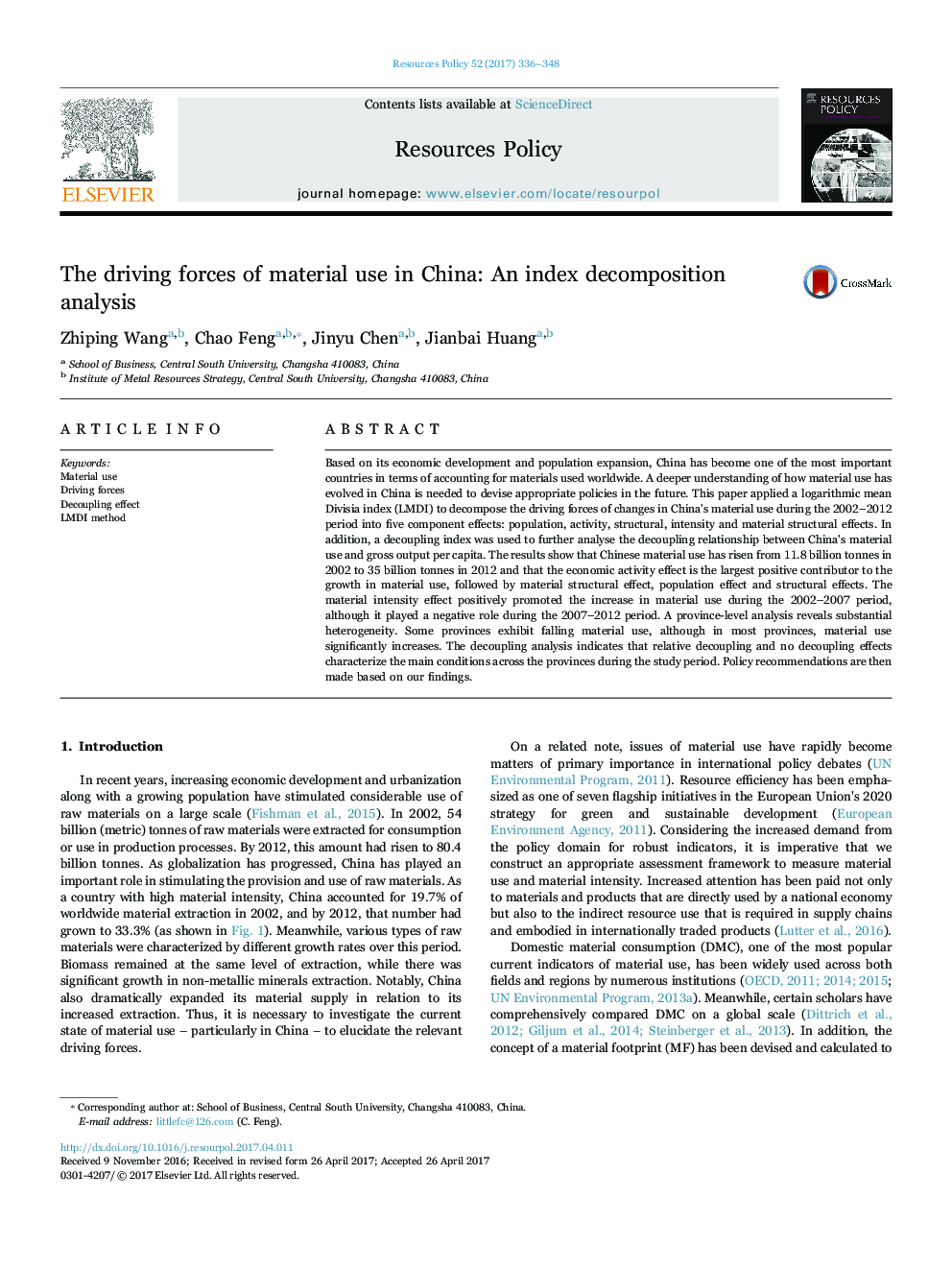| Article ID | Journal | Published Year | Pages | File Type |
|---|---|---|---|---|
| 5104221 | Resources Policy | 2017 | 13 Pages |
Abstract
Based on its economic development and population expansion, China has become one of the most important countries in terms of accounting for materials used worldwide. A deeper understanding of how material use has evolved in China is needed to devise appropriate policies in the future. This paper applied a logarithmic mean Divisia index (LMDI) to decompose the driving forces of changes in China's material use during the 2002-2012 period into five component effects: population, activity, structural, intensity and material structural effects. In addition, a decoupling index was used to further analyse the decoupling relationship between China's material use and gross output per capita. The results show that Chinese material use has risen from 11.8 billion tonnes in 2002 to 35 billion tonnes in 2012 and that the economic activity effect is the largest positive contributor to the growth in material use, followed by material structural effect, population effect and structural effects. The material intensity effect positively promoted the increase in material use during the 2002-2007 period, although it played a negative role during the 2007-2012 period. A province-level analysis reveals substantial heterogeneity. Some provinces exhibit falling material use, although in most provinces, material use significantly increases. The decoupling analysis indicates that relative decoupling and no decoupling effects characterize the main conditions across the provinces during the study period. Policy recommendations are then made based on our findings.
Related Topics
Physical Sciences and Engineering
Earth and Planetary Sciences
Economic Geology
Authors
Zhiping Wang, Chao Feng, Jinyu Chen, Jianbai Huang,
